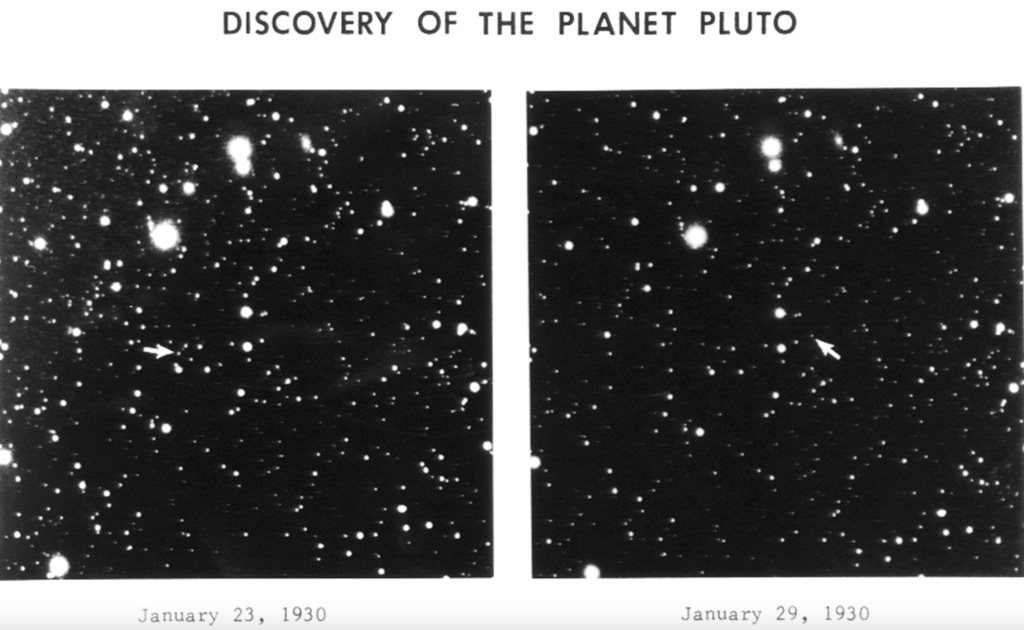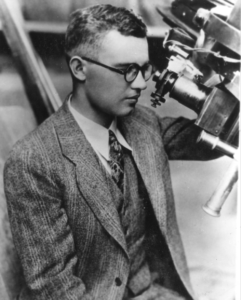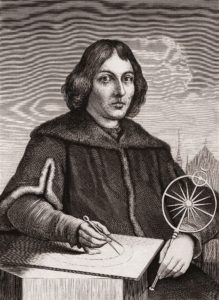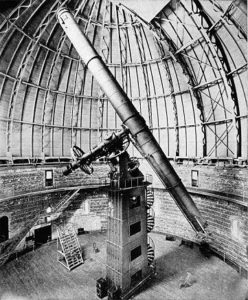
Photo: the two photographic glass plates Clyde Tombaugh compared to each other to ultimately discover Pluto.
February 18, 1930: Clyde Tombaugh discovers Pluto

Clyde Tombaugh at the guide scope for the 13″ astrograph used to discover Pluto | Lowell Observatory Archives
On February 18, 1930, newly-minted, 24-year-old astronomer Clyde Tombaugh spotted what was then referred to as Planet X on plates taken on the 23rd and 29th of January in the same year. Tombaugh would name the planet Pluto, as suggested in a letter from an 11-year-old English girl named Venetia Burney.
The process leading up to the historic discovery was a laborious one: Tombaugh would photograph the same section of the sky several days apart and use a Zeiss Blink Comparator to detect the motion of a nearby planet against the more distant “fixed” stars. Considering the search for what Percival Lowell referred to as Planet X had spanned nearly three decades (with some interruptions in between), the fact that Tombaugh discovered it in a matter of months was particularly impressive. The discovery was announced to the public March 13, 1930 — Percival Lowell’s birthday.
February 19, 1473: Copernicus is born

A portrait of Copernicus | Getty Images/GraphicaArtis
Mathematician, astronomer, and Catholic canon (priest) Nicolaus Copernicus was born on February 19, 1473 in Thorn, Royal Prussia (now Toruń, Poland). He is best known for creating a model of the universe that placed the Sun at the center of the universe rather than the Earth, contrary to the popular belief of the time. The publication this model in his book De revolutionibus orbium coelestium (On the Revolutions of the Celestial Spheres) in 1543 gave rise to the Copernican Revolution, a widespread shift toward the acceptance of a heliocentric universe. This would set the stage for the Scientific Revolution, a series of events that lead to our modern understanding of science. Among these was the publication Isaac Newton’s laws of motion and universal gravity.
February 21, 1897: First light for the 40-inch refractor at Yerkes Observatory

1897 photo of the 40 in refractor at the Yerkes Observatory | Unknown, public domain
Yerkes Observatory in Williams Bay, Wisconsin is home to the largest refractor ever successfully used for astronomy. The telescope, called the Yerkes Great Refractor, is a 40-inch refracting telescope made by Alvan Clark & Sons—the same company that made the Clark Telescope and the Pluto Discovery telescope at Lowell. Its size was staggering for the time, its main tube spanning 60 ft. The Great Refractor saw first light at Yerkes Observatory on February 21, 1897.